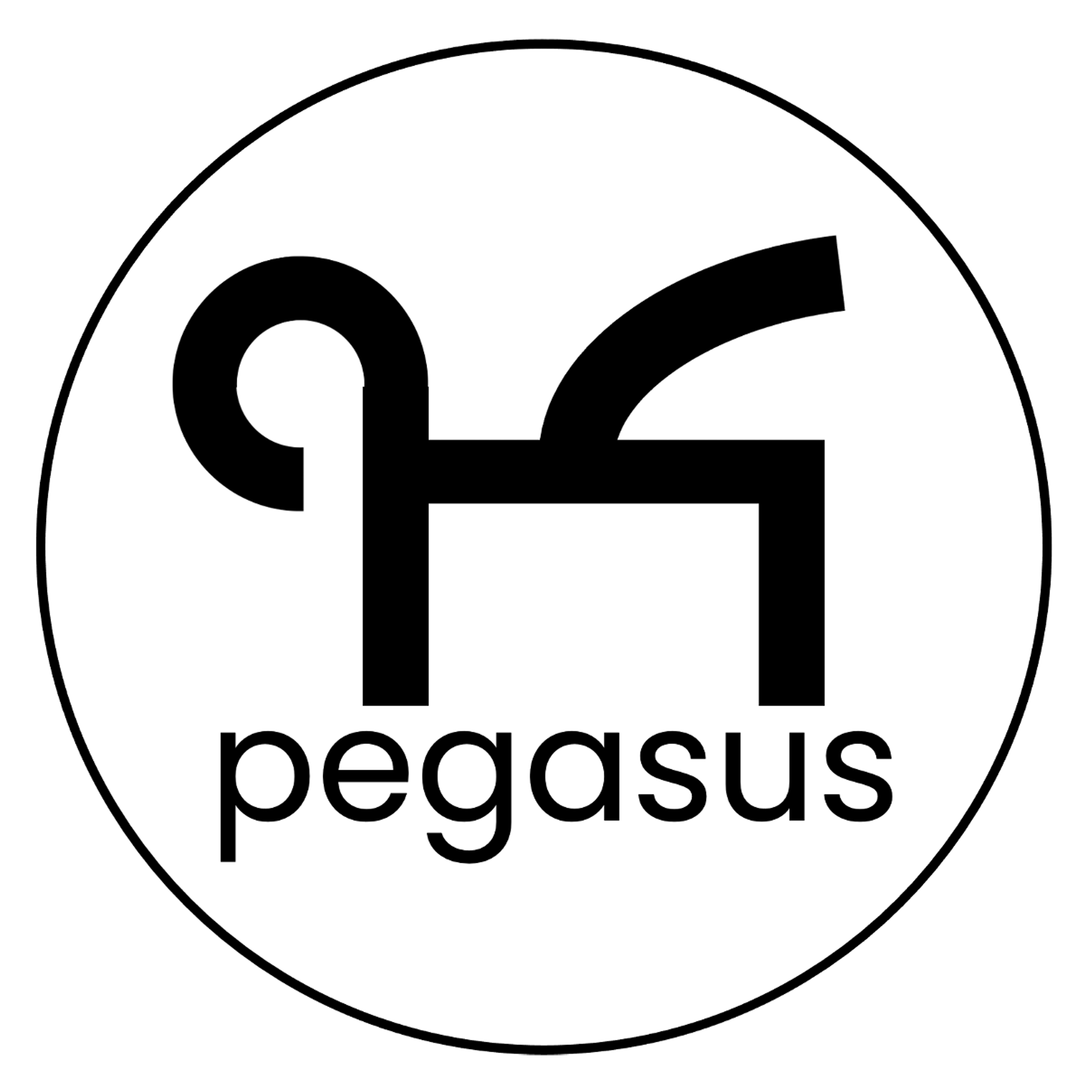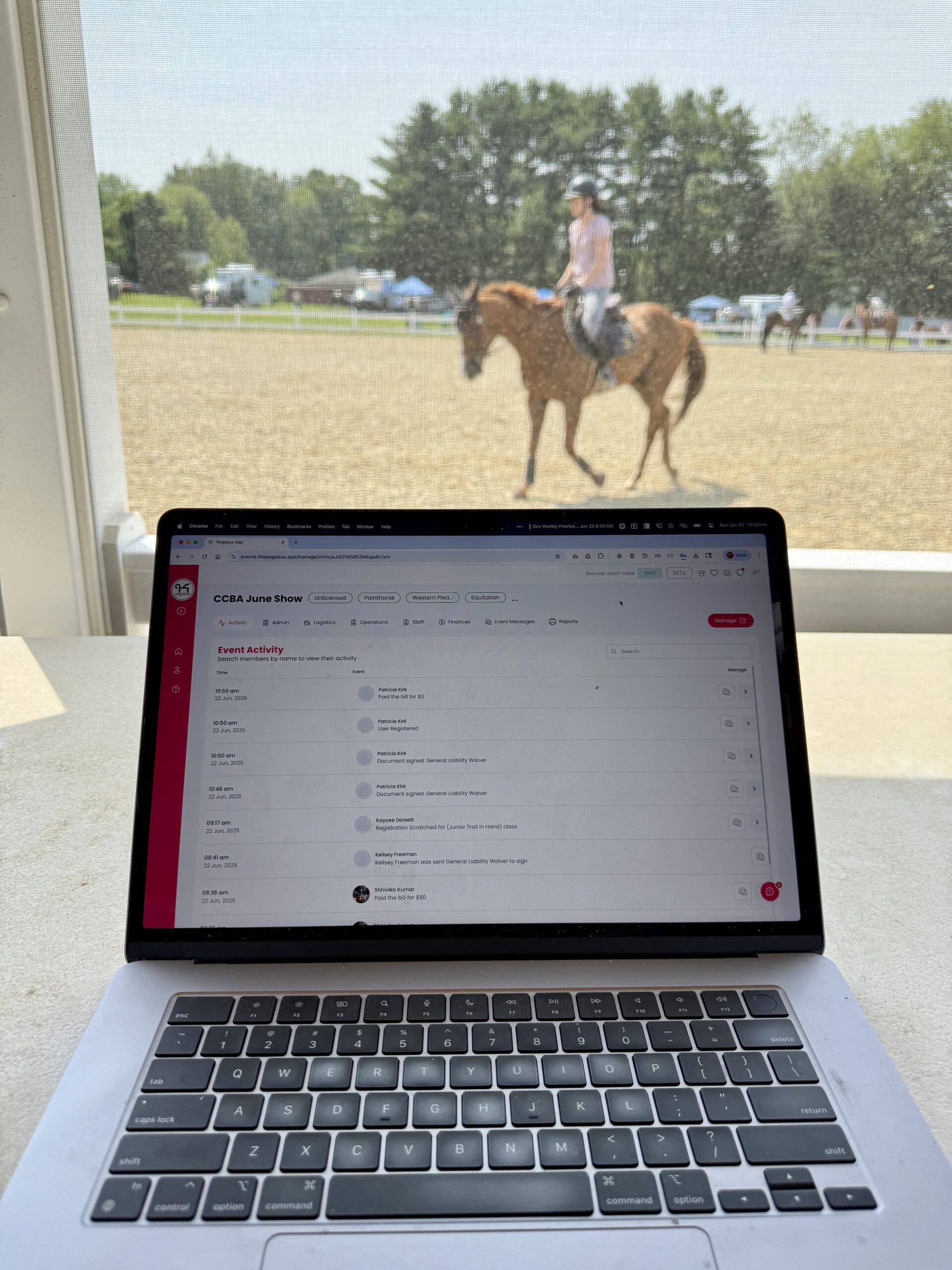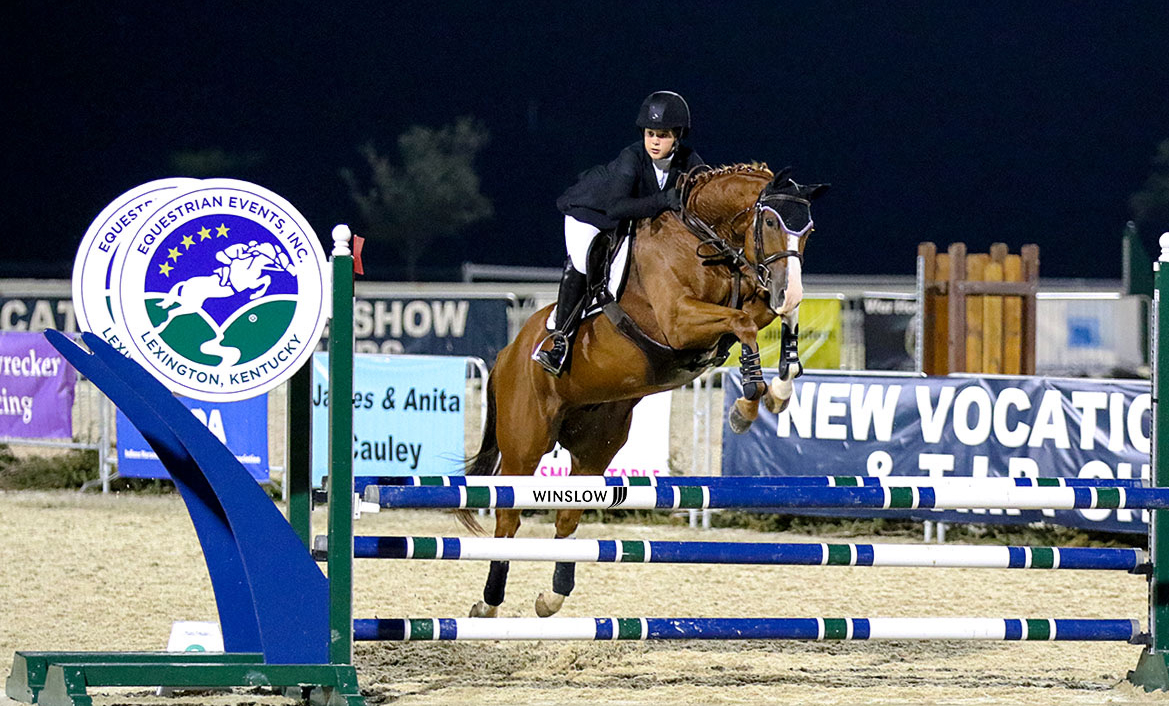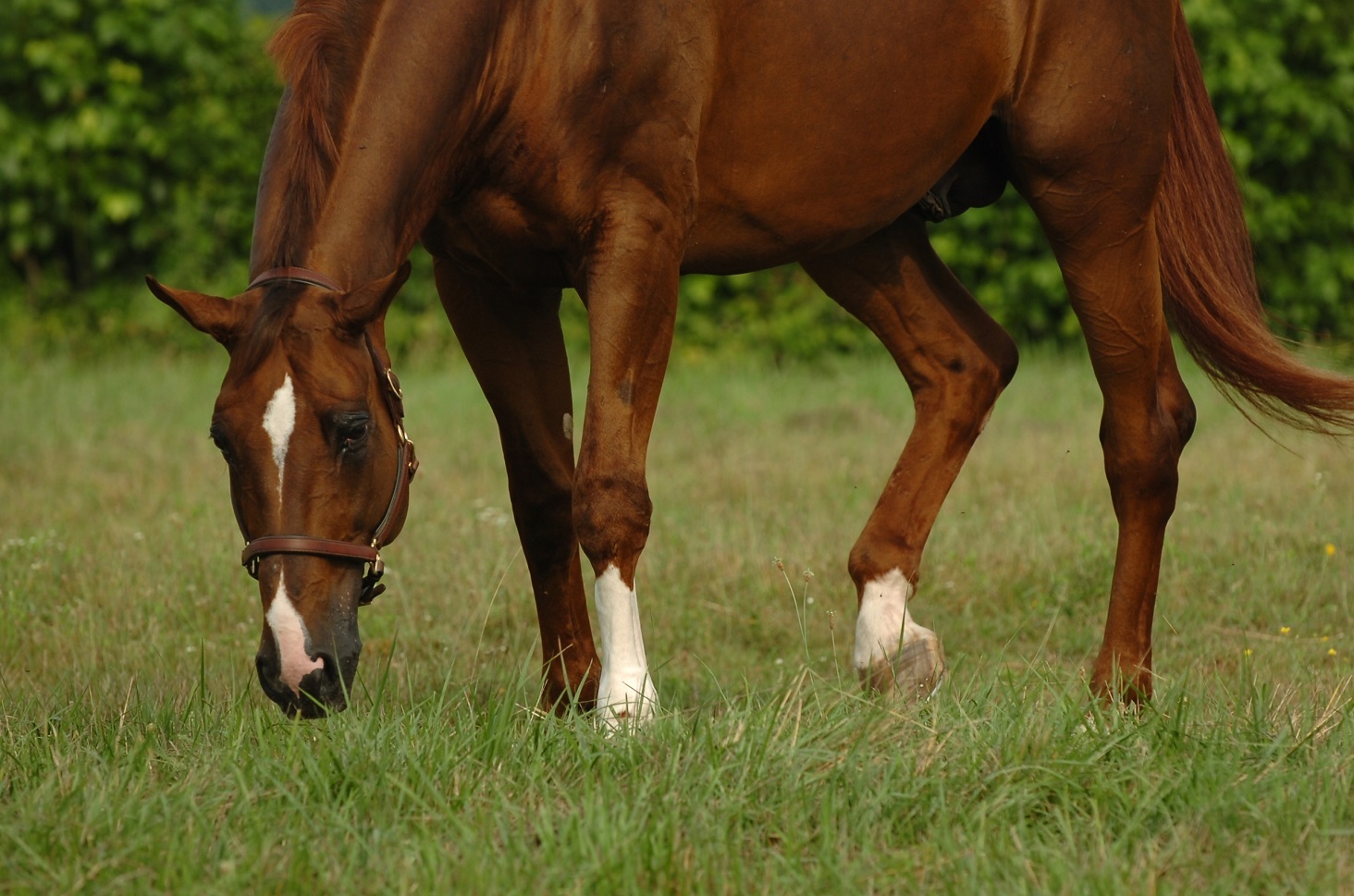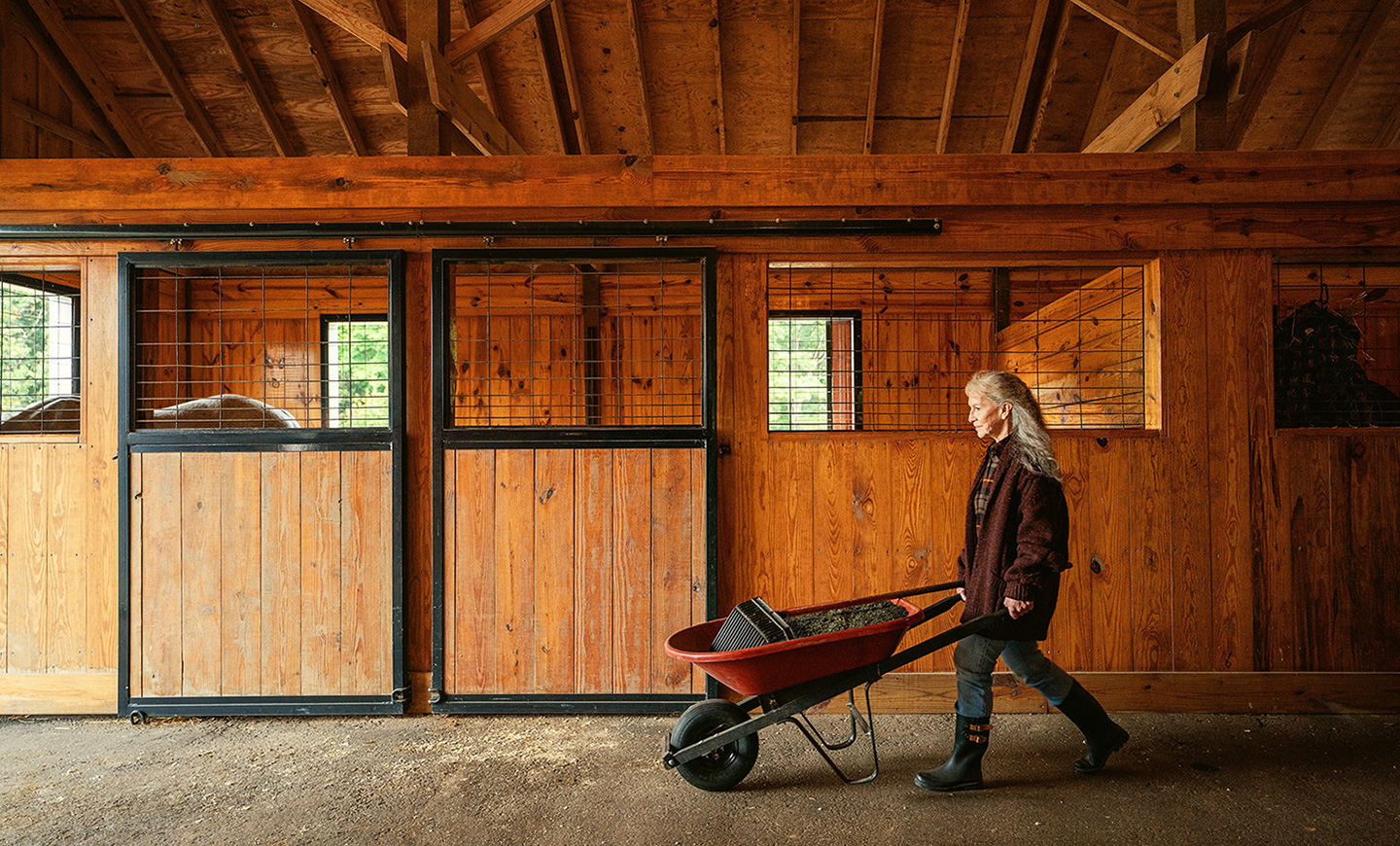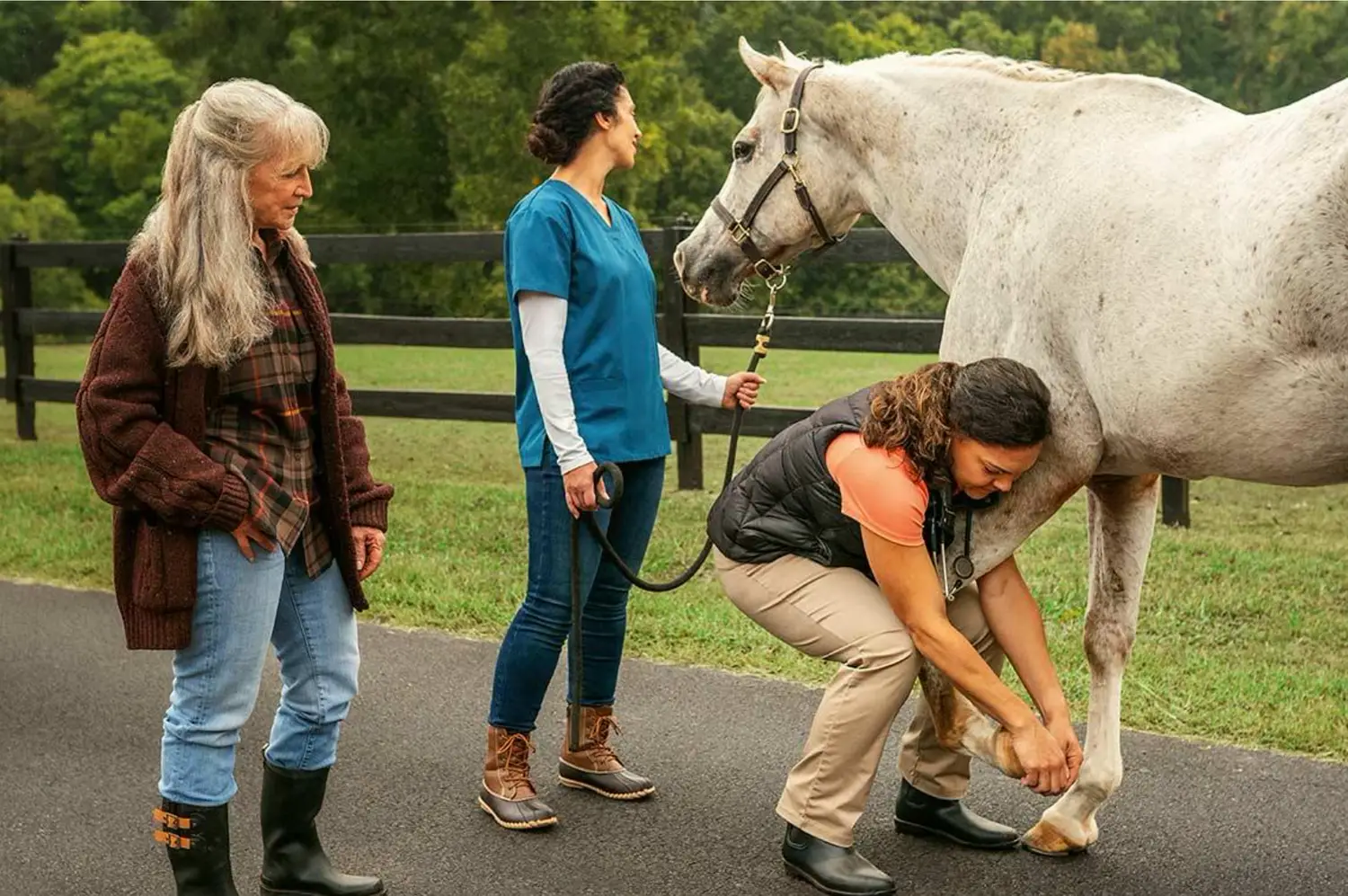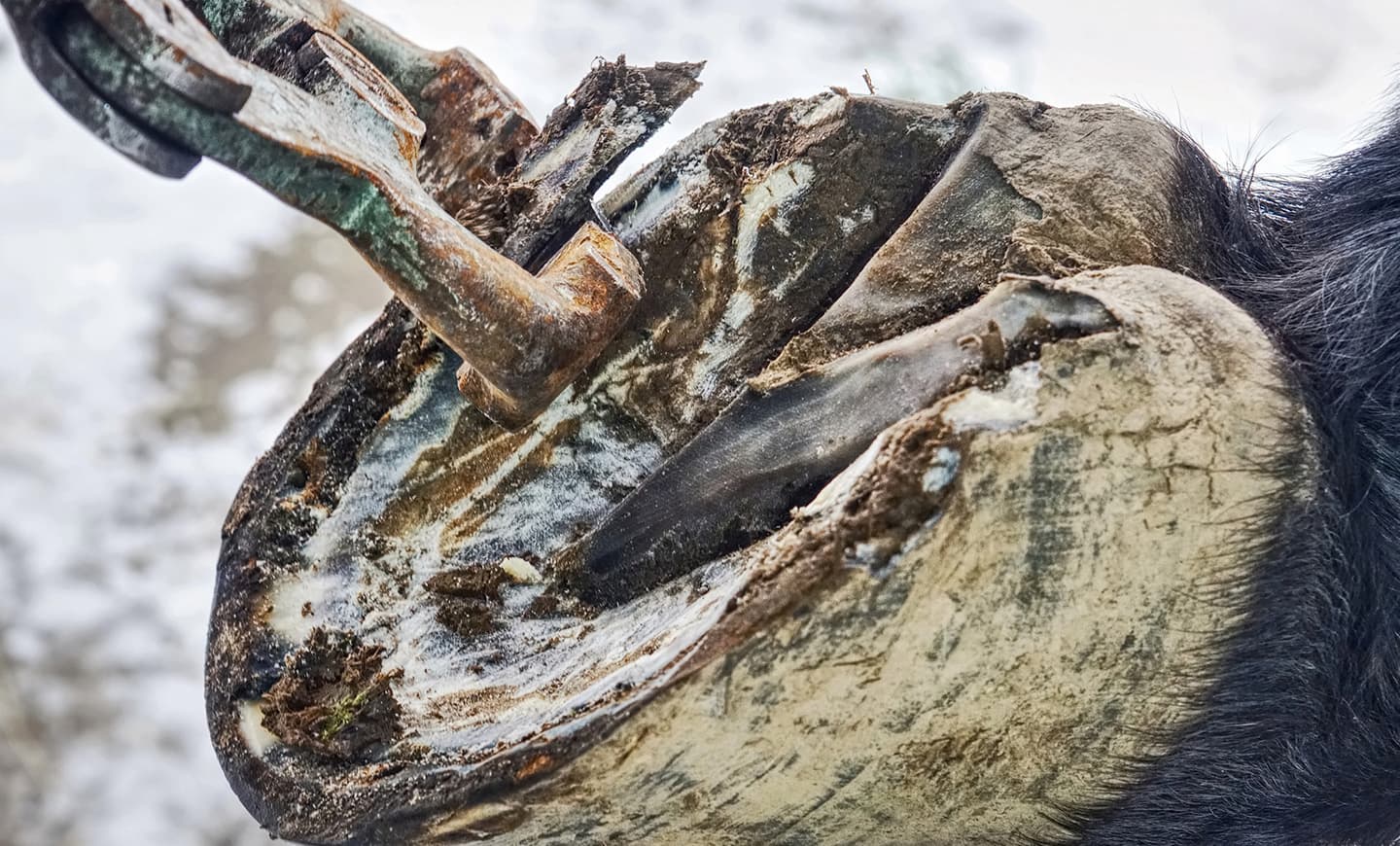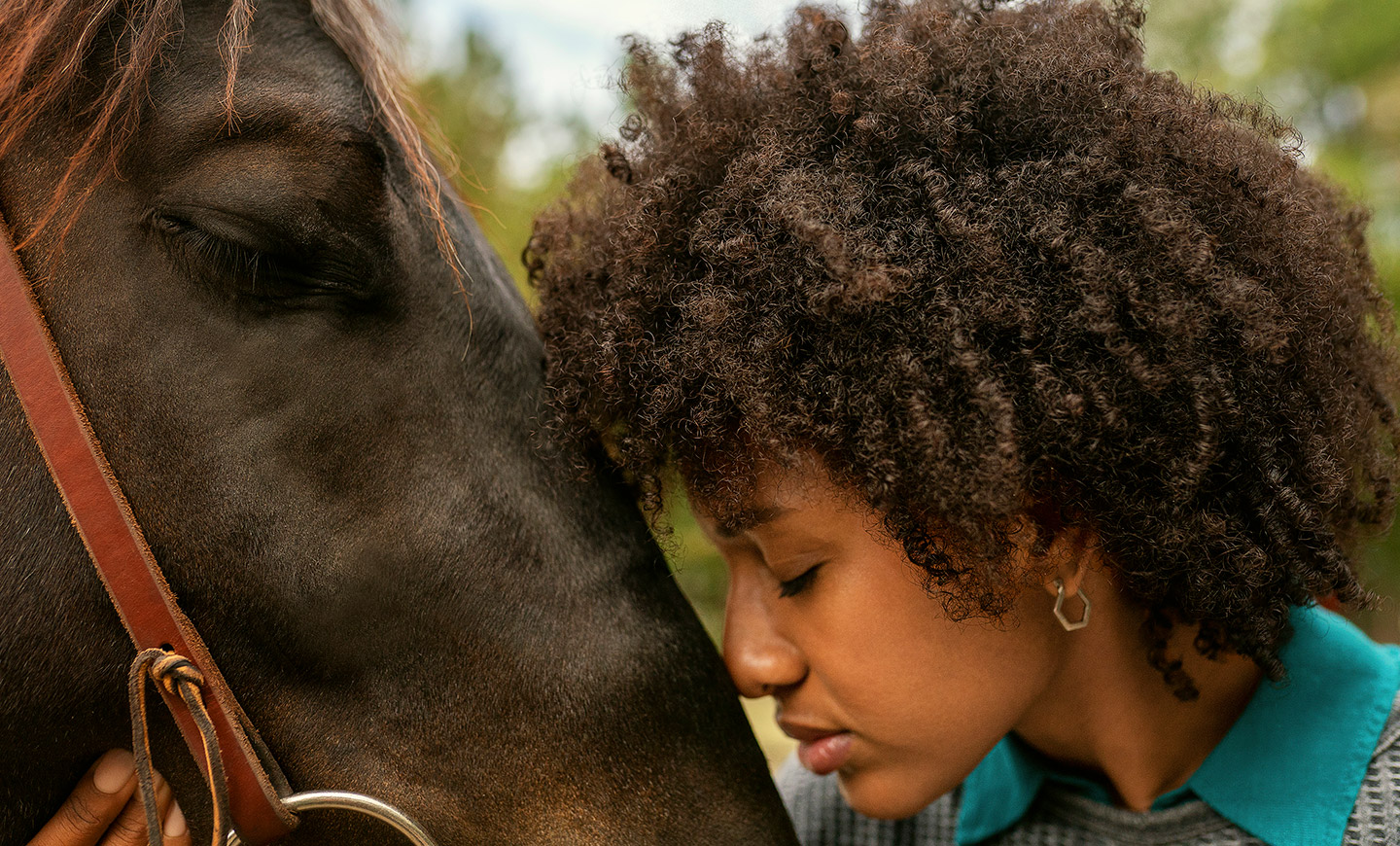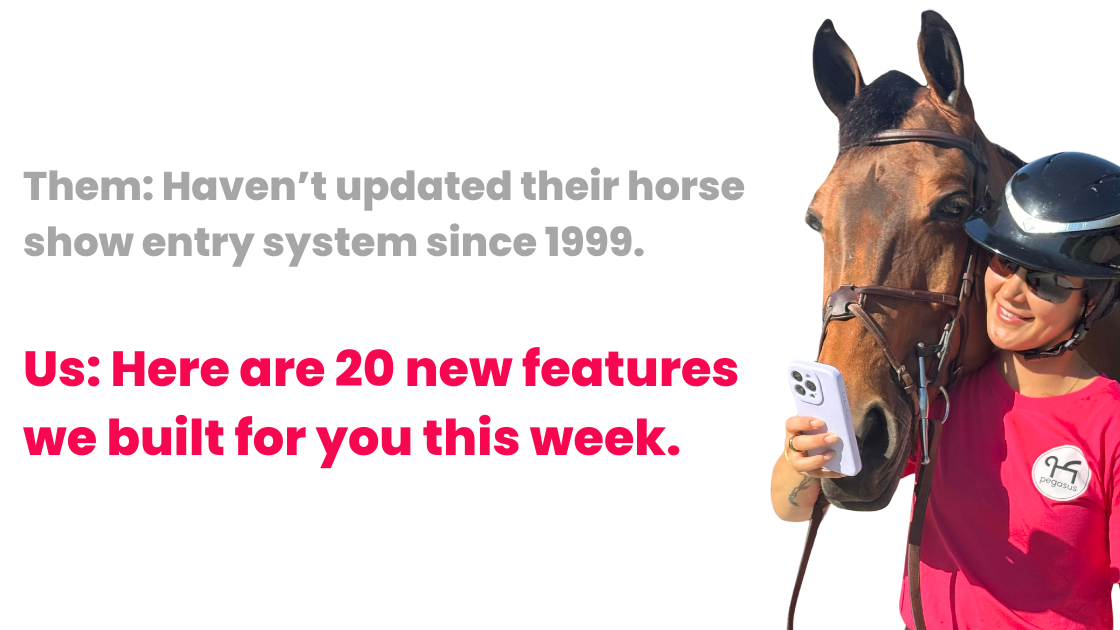Running a horse show is no small task – and finding the best horse show management system can make all the difference. From managing entries and schedules to communicating with riders and handling payments, organizing an equestrian event is a complex operation. That’s why more organizers are turning to Pegasus – the most modern and flexible horse show software available today. Whether you’re managing a clinic, a schooling show, or a sanctioned multi-day competition, Pegasus simplifies the process from start to finish. It’s quickly becoming known as the best horse show management system for organizers worldwide. A Modern Horse Show System Built for the Equestrian World Pegasus is a cloud-based equestrian event management system designed specifically for the unique needs of horse shows and clinics. It gives organizers one powerful platform to handle: Instead of juggling spreadsheets, paper forms, and email threads, Pegasus puts everything in one place – saving time, reducing stress, and improving the experience for both organizers and competitors. A Flexible Horse Show Software for Clinics, Schooling Shows, and Sanctioned Events Unlike other horse show software that only works for a specific discipline or show type, Pegasus supports: Pegasus is the horse show system designed to flex and scale with your event, no matter the size, discipline, or location. Free to Use — No Contracts, No Sign-Up Fees One of the reasons Pegasus is considered the best horse show software by so many organizers is its pricing model. You can create your event and start managing entries within minutes – no onboarding delays or hidden charges. Online Horse Show Entries Made Easy Pegasus was built with modern online horse show entry in mind. Riders can sign up from their phones, view confirmed ride times, and receive real-time updates. Organizers can cap entries, manage waitlists, and approve sign-ups on their terms – without chasing paperwork or deciphering handwriting. The result? A faster, smoother, and more professional entry experience for everyone involved. Real-Time Scheduling, Messaging, and Ride Time Updates Forget printing last-minute day sheets or fielding nonstop “When do I ride?” messages. Pegasus gives you tools to update schedules in real-time, notify riders instantly, and streamline communication before, during, and after the event. This makes it the most efficient horse show system for keeping everyone – from barn staff to parents – on the same page. Designed by Equestrians, for Equestrians Pegasus wasn’t built by a software company guessing at what riders need – it was created by lifelong equestrians who’ve competed, coached, and managed events across disciplines. That’s why the platform includes: Whether you’re running a local clinic or a rated show, Pegasus meets the real-world needs of the equestrian community. Why Organizers Choose Pegasus as the Best Horse Show Software Organizers love Pegasus because it offers: Ready to Try the Most Modern Horse Show Software? Pegasus is redefining what organizers expect from their equestrian event management system. Whether you’re managing your first clinic or your fiftieth sanctioned show, Pegasus gives you the tools to run a smoother, smarter event – no spreadsheets, no stress. 👉 Get started today at www.thepegasus.app
Kentucky Three-Day: Inspiring the Next Generation of Equestrians
By: Zoetis Equine in partnership with United States Pony Clubs At Pegasus, we believe in supporting the education, wellness, and lifelong care of horses – both in and out of the show ring. That’s why we’re proud to share this article from our partners at Zoetis and the United States Pony Clubs. As a platform built by equestrians (including our cofounder, Jen Tankel, a Pony Club alum!), we’re excited to help amplify resources that empower the next generation of horsemen and horsewomen. Caption: Photo provided by the Cruz-Valdez family: Featuring USPC member Mia Valdez In just a few weeks, riders from around the world will travel to Lexington, KY, for one of the premier competitions of the year. One of only seven annual CCI5*-L-level competitions held worldwide, the Defender Kentucky Three-Day Event, presented by MARS Equestrian, brings together elite riders from nearly every continent to compete for over $400,000 and their place in history. Being at the same level as an Olympic competition, it offers an opportunity for riders to test their skills against the best and for spectators to get a preview of what they might see at the Los Angeles Summer Olympics in 2028. While events like these showcase the highest level of competitive riding, their impact on the equine world goes far beyond the sport. In short, they provide an opportunity for the equestrian community to celebrate their lifestyle and the horse-human connection. Whether you’re a rider, trainer, breeder, veterinarian, horse owner or organizer, the Kentucky Three-Day and events of its caliber are only possible through the support and passion of the entire community. At Zoetis, we count ourselves among those ardent equine enthusiasts. It’s why we so fervently pursue innovations that improve the lives of our four-legged friends, why we’re annual sponsors of the Kentucky Three-Day Event and why we became the official health and wellness partner of the United States Pony Clubs (USPC or Pony Club). USPC shares our passion for horses and seeks to foster that love in the next generation of riders, horse owners, industry professionals and even future equine veterinarians. We’re entering year four of our partnership, and we’re grateful for opportunities to team up on horse health education and in-person collaborations at events like the Kentucky Three-Day. Getting started with Pony Club Just like the Kentucky Three-Day Event, USPC has a long history and deep connections with the equine world. One could even argue that there wouldn’t be events like the Kentucky Three-Day without the launch pad that organizations like USPC provide to aspiring riders and the broader impact they have on the industry. Since its founding in 1954, USPC has helped thousands of kids, teens and adults learn the skills needed to own, care for and ride horses. It also cultivates connections and opens doors that would otherwise remain inaccessible to many. “It has given me opportunities I wouldn’t have known existed,” said Mia Valdez, a member of the Mountain Skyline Pony Club in Virginia. In 2023, Valdez attended the Kentucky Three-Day Event through the USPC Ann Haller media internship. Named for a highly respected Pony Club member, Haller, a B Eventing- and H-A Horse Management-certified alum from Hood Pony Club in the South Region, who went on to make a name for herself in the eventing world and in equine media while serving as a Pony Club instructor, clinician, coach, National Examiner, Chief Horse Management Judge and a Board of Governors member. The internship invites young members to attend the event as part of the media team, where they get to see the action up close while forming lifelong memories. In a blog post recapping her experience, Valdez shared, “Over the course of the weekend, I was able to interview riders after dressage and cross-country, as well as go out on cross-country and help film pictures. Everyone I met was incredibly helpful and kind, answering any questions I had. Getting to experience the busy and exciting workings of the media center allowed me to meet amazing people, as well as get a better understanding of what goes into the social media aspect of our sport.” If you talk to Valdez or any other Pony Club member, you’ll likely hear about how much they learned and the lifelong skills that have been instilled through their participation. Whether it’s taking care of equipment, feeding, grooming or other horsemanship skills, Pony Club gives members, even those without a horse or previous equine knowledge, the opportunity to challenge themselves and become full-fledged equestrians. “Parents really aren’t allowed,” said Valdez. “It’s us kids and our teams who are in charge of getting each other out for ride times, preparing our horses and making sure everything is clean and organized afterward. It’s really about the knowledge base and the people you get to meet. Those friendships last a lifetime, and the horse world is so great about helping each other out.” Valdez’s story is a great example of the positive impact Pony Club has on members. After first being introduced to riding by her mother through a local summer camp, Valdez’s interest grew and she became a member a few years later. In addition to receiving the Ann Haller internship, Valdez has gained long-lasting friendships, invaluable connections and confidence as a rider. She can even boast about being one of the youngest people in the state of Virginia to achieve her C3 certification. Later this year, Valdez will take her USPC A-level certification. Inspiring the next generation Colleen Rutledge, a USPC alum with her A Eventing certification from Frederick Pony Club in the Capital Region and an international-level event rider, echoed many of Valdez’s sentiments about the impact the organization has had on her, especially when it comes to core knowledge of equine health. “The base of knowledge I gained was invaluable, especially going on to become a professional,” said Rutledge. “I still maintain the discipline they instilled in me. Things like checking my tack every single time that I use it to make sure it’s safe. Not everyone takes the time
Stay ahead of parasites with targeted deworming
By Kenton Morgan, DVM, Equine Technical Services Veterinarian, Zoetis Did you know most internal equine parasites (approximately 90%) originate from your horse’s natural environment?1 While we cannot eliminate the issue entirely, we can work to reduce a horse’s parasitic exposure. Along with managing the environment, partnering with your veterinarian is key to determining a seasonal, targeted deworming plan. A shift to strategic deworming practices Targeted deworming is a strategy that focuses on treating horses for parasites when parasite exposure and transmission is likelier to occur. In the past, experts recommended deworming about every 60 to 90 days; however, an ever-growing body of research reveals how some parasite populations have grown resistant to many of the available drug classes.2 Today, the American Association of Equine Practitioners (AAEP) recommends that veterinarians make deworming decisions based primarily on a horse’s age, their egg-shedding status (based on fecal egg counts) and the length of the grazing season in your area. Reduce your horse’s exposure Intestinal parasites can cause serious health problems in horses, including fever, diarrhea, colic and even death. Therefore, it’s critical to minimize risk exposure, reduce parasite egg shedding and use the most effective treatments at the right time. Identify your horse’s life stage Your horse’s age is the first factor to consider when selecting a dewormer, since not all equine internal parasites pose the same risks at every age. Conduct a fecal egg count Ask your veterinarian to perform a fecal egg count or a fecal egg count reduction test every year. A fecal egg count will determine if your horse is a low, medium or high shedder. A fecal egg count reduction test can help determine if there is resistance to dewormers on the farm. Horses that shed more eggs back into the environment via manure increase the exposure of the entire herd to potential parasites. I recommend asking your veterinarian to conduct a fecal egg count during spring wellness visits, but if that’s not feasible, fecal egg counts can be run at any time of year. Know the right time to deworm your adult horse Healthy, low-shedding adult horses will typically receive a deworming treatment at the beginning and end of the grazing season, which differs by geography: Deworming treatments for foals, yearlings and 2-year-olds Treatment options differ when it comes to deworming foals, yearlings and 2-year-olds because the parasites of concern differ in young horses compared to mature horses. Compare dewormers Moxidectin is the experts’ active ingredient of choice for small strongyles because it treats both the encysted larval and adult stages, all in a single dose.3 Both Quest Gel and Quest Plus Gel are formulated with moxidectin, which is also effective against large strongyles (bloodworms), bots, pinworms, hairworms and stomach worms. *Per the 2024 AAEP Parasite Control Guidelines, there is widespread roundworm (ascarid) resistance (lack of efficacy) to macrocyclic lactones (moxidectin and ivermectin).**Per the 2024 AAEP Parasite Control Guidelines, multiple studies show widespread small strongyle (cyathostomin) resistance (lack of efficacy) to benzimidazoles (fenbendazole and oxibendazole). Target the right parasites at the right time Still unsure which parasite treatment plan is the right fit for your horse? The following quiz will help you decide based on your horse’s age, location and the time of year. Remember to always seek guidance from your veterinarian in the diagnosis, treatment and control of parasitism. For more information on deworming, I recommend the following blog, “How to Deworm Your Adult Horse,” with a video that unpacks targeted, seasonal deworming tips. IMPORTANT SAFETY INFORMATION Do not use Quest Gel or Quest Plus Gel in foals less than 6 months of age or in sick, debilitated and underweight horses. Do not use these products in other animal species, as severe adverse reactions, including fatalities in dogs, may result. Consult your veterinarian for assistance in the diagnosis, treatment, and control of parasitism. At Pegasus, we’re proud to partner with organizations like Zoetis who share our passion for horse welfare and our vision for the future of equestrian sports. Together, we’re driving innovation and raising the standard of care for horses everywhere. Check out more from health care tips and resources from Zoetis in the Pegasus Newsroom: References All trademarks are the property of Zoetis Services LLC or a related company or a licensor unless otherwise noted. Bimectin is a trademark of Bimeda Inc. EquiMAX is a trademark of Virbac. IverCare is a trademark of Farnam. Panacur is a trademark of Merck Animal Health. Safe-Guard is a trademark of Intervet Inc. Zimecterin Gold and Eqvalan are trademarks of Boehringer Ingelheim. © 2025 Zoetis Services LLC. All rights reserved. QST-00222R1
Spring Into Action: A Horse’s Guide to Blooming Health and Fitness
By Holly J. Helbig, DVM, Equine Technical Services Veterinarian, Zoetis Ah, spring. That magical time of year when flowers bloom, birds sing and horses … well, they start to shed enough hair to knit a sweater for a small village. As an equine ambulatory veterinarian, I’ve seen the joys and tribulations of springtime horse care up close and personal. Spring brings not only the promise of warmer days and exciting competitions but also a slew of healthcare considerations for our four-legged athletes. Fear not! I’m here to guide you through the process with a mix of humor, practical advice and, of course, a story or two from the field. The ultimate spring horse care checklist 1. Shedding the winter coat: The furry tsunami First order of business is dealing with the incredible amount of hair your horse decides to shed. Daily grooming is key—not just for your horse’s comfort and health but to save your barn from becoming a giant hairball. Use a curry comb, shedding blade and a lot of elbow grease. Consider it your spring workout plan; who needs a gym membership? 2. Hoof care: From snow boots to sneakers Winter can be tough on your horses’ hooves. With spring on the horizon, it’s time for a pedicure. Schedule a visit with your farrier to address any issues like thrush, which thrives in wet conditions, or to adjust shoeing for the upcoming training season. Healthy hooves are the foundation of a happy horse. 3. Dental check: The overlooked spring cleaning Just like us, horses need regular dental care. Spring is a great time for your vet to perform a dental exam and address any issues before the heavy work begins. A horse with dental problems is like a car with misaligned tires; performance will definitely be affected. 4. Keep your horse “jointly springing into action” As spring rolls around, horses everywhere are shaking off the winter cobwebs and getting ready to frolic in the fields. But let’s not forget about their precious joints. It’s like they’re gearing up for a horse version of “Dancing with the Stars,” but without the judges, sequins, or Bruno Tonioli commentary. So, as we bid adieu to the winter stiffness, let’s ensure our equine pals have the joint support they need to strut their stuff without any “ouch” moments. After all, nobody wants to see a horse attempting the foxtrot with a limp! 5. Equine vaccine checklist: Your spring health shield Spring vaccinations are crucial to help protect your horse from diseases that can wreak havoc on their health and training schedule. Here’s a simplified vaccine checklist, brought to you by Zoetis, because we love keeping things straightforward: Core vaccines: The non-negotiables Did you know? Core EQ Innovator® is the first and only vaccine to help protect horses against all five potentially fatal equine diseases in one injection. Visit Zoetis’ vaccines webpage to learn more. Risk-based vaccines: Tailored to your horse’s lifestyle Region-specific vaccines: Depending on where you live, other vaccines might be necessary. Always consult with a veterinarian (hey, like me!) to tailor the vaccination program to your horse’s specific needs. For example, if your horse is at a greater risk for respiratory diseases like equine influenza and herpesvirus, your veterinarian may recommend Fluvac Innovator® EHV-4/1. Show Jumper, Gaby Reutter’s Travel Checklist: Peek behind the curtain to see how Gaby Reutter partners with her veterinarian to ensure her horses stay in top health before, during and after competitions. Download the biosecurity checklist to learn more. 6. Pasture management: The grass is always greener After being cooped up all winter, horses are eager to graze. Make sure your pastures are ready. Early spring is the time to fertilize and seed as necessary. Avoid having too many horses and/or other livestock on the pasture at once and keep grass between 4 and 8 inches. Rotate pastures to prevent overgrazing, control parasites and ensure a lush, green buffet for your horses all season long. Oh, but not too lush for our insulin-resistant horses who may benefit from a grazing muzzle. They are like lawnmowers with a sweet tooth, munching on grass as if they’re auditioning for a role in “Carbohydrate Chaos: The Equine Edition.” Your horse might think they’re at an all-you-can-eat buffet, but we’re here to remind them that summer bods are made in the spring. 7. Fecal egg counts: Tales from the tail-end Ah, the glamorous world of fecal egg counts. While the process may seem less than glamorous, it’s a vital aspect of equine healthcare, helping to safeguard the well-being of our four-legged companions. By examining a horse’s feces for the presence and quantity of parasite eggs, veterinarians can determine the effectiveness of deworming protocols and tailor treatment plans to each individual horse’s need: because nothing says “bonding experience” like examining poop samples together with your veterinarian. So, grab your gloves and let’s dive into the delightful world of equine excrement analysis—it’s a crappy job, but someone’s gotta do it! Experts recommend less frequent yet targeted deworming practices (to avoid potential parasitic resistance), based on a horse’s age, life-stage and geographic zone.2 Here is a quiz to help you determine the right dewormer for your horse to ask your veterinarian about at the next wellness exam. For adult horses in the spring, the American Association of Equine Practitioners recommends moxidectin, the active ingredient in Quest® Gel—the experts’ ingredient of choice against small strongyles.1 8. Pest control: The bug battle With spring comes bugs, and with bugs come diseases. Implementing a pest control plan is key. This includes managing standing water, using fly predators or traps and keeping your barn as clean as possible to discourage unwanted guests. 9. Facility maintenance Who needs CrossFit when you’ve got barn chores? It’s time to channel your inner DIY guru and tackle those springtime projects like a pro. From mucking stalls to fixing fences, it’s a workout worthy of an Olympic Medal. Just remember to stretch—those hay bales aren’t going to lift themselves! Spring is a time of renewal, and with the right preparation, it can set the stage for
Exciting Giveaway Alert! Win Amazing Equestrian Prizes! 🎉🐴
The team at Pegasus is thrilled to bring you an incredible giveaway in partnership with Kerrits, professional show jumper and Pegasus Rider, Gabriela Reutter, and Common Sense Horse Keeping. This is your chance to win some amazing equestrian gear and prizes from brands and experts who are as passionate about horses as you are. How to Enter Giveaway package: Each one of three winners receives a Common Sense Horsekeeping Book, a Kerrits EQ Backpack, and a Pegasus branded saddle pad, fanny pack, and hat. Entry instructions for giveaway post: Meet Our Giveaway Partners 🦄 Pegasus – The modern event management system making horse shows easier than ever. ✨ Kerrits – High-performance equestrian apparel for riders of all levels. 🏇 Gabriela Reutter – Professional show jumper dedicated to excellence in the ring. 📚 Common Sense Horse Keeping – Expert horse care tips from a lifelong equestrian. Official Rules & Details Pegasus App x Kerrits x Common Sense Horsekeeping x Gabriela ReutterOfficial Giveaway Rules
The Future of Equine Joint Management With Orthobiologics
You likely consider your horse part of your family—and when they show signs of joint discomfort from the natural wear and tear of training or the aging process, it’s hard to see them working through pain. Despite the challenges that come with joint disease in horses, regenerative medicine technologies allow veterinarians to approach equine pain management with an entirely different set of tools. Your horse’s self-healing abilities You likely consider your horse part of your family—and when they show signs of joint discomfort from the natural wear and tear of training or the aging process, it’s hard to see them working through pain. Despite the challenges that come with joint disease in horses, regenerative medicine technologies allow veterinarians to approach equine pain management with an entirely different set of tools. Competitive horses with concerns about career longevity, maximizing their joint health or drug withdrawal times Young horses whose athletic career you want to maximize while minimizing the negative impact on cartilage from chronic repetitive steroid use PPID, metabolic or insulin-resistant equine patients, or those with a history of propensity to develop laminitis Pro-Stride® APS device for equine joint pain Today, veterinarians have the option to manage lameness by concentrating the natural properties found in a horse’s blood or bone marrow with the assistance of regenerative medicine devices (RMDs). An increasing body of evidence reveals that these devices have the potential to modify the course of joint disease by promoting healing and reducing pain and inflammation in horses.1 Below are three types of horses a veterinarian is likely to recommend for treatment with RMDs: How it works: A veterinarian collects blood from your horse, and then the blood is placed into the Pro-Stride APS (autologous protein solution) device and centrifuged. This allows the device to isolate anti-inflammatory cytokines and growth factors from the blood. The final concentrated solution is then injected back into your horse’s joint(s) to promote healing and decrease pain and inflammation. Method: With APS, it’s possible to address the root cause of orthopedic disease, slow disease progression and help reduce the number of maintenance injections your horse receives.3 The goal is to help alleviate pain and prolong your horse’s athletic career beyond masking symptoms. The growth factors contained in the solution accelerate cell growth, enhance cell survival, decrease inflammation and assist in tissue repair.3 Horse-powered healing This stall-side procedure takes less than 30 minutes to perform right at the farm and can help address existing OA while preventing further disease progression.1 Your veterinarian should conduct a complete lameness evaluation to confirm the diagnosis and treatment location, regardless of whether it’s for an injury or maintenance purposes Typically, significant positive outcomes can be observed within 2 to 4 weeks, sometimes even earlier, when using Pro-Stride2 An APS concentration can help regenerate soft tissue and slow the progression of joint disease and has been shown to have a beneficial effect on rehabilitation time, meaning horses can potentially get back to performing sooner4,5 The Pro-Stride APS device can also be used after arthroscopy, surgical fracture repair, chip removal or osteochondritis dissecans surgery to help decrease inflammation in the joint post operatively A Pro-Stride APS solution is safe for use in all joints, including: Stifles with meniscal or cruciate injuries Coffin bone Navicular bursa Pastern Fetlock Carpus Elbow Shoulder Hock Stifle Hip Sacroiliac joint As with any care decision, a veterinarian’s case selection and early action is important. While Pro-Stride can aid in pain management secondary to OA, your horse may likely see faster and longer-lasting results in mild to moderate cases when used as a first-line approach versus in chronic end-stage joints where no treatment has improved the outcome. Other RMDs to discuss with your veterinarian Restigen® PRP is an extensively clinically studied Platelet-Rich Plasma Device with considerable scientific backing, used primarily for soft tissue injuries.2,6 Additionally, the Centrate® BMA (bone marrow aspirate) device allows for a rapid concentration of bone marrow aspirate for injuries to soft tissues and areas were soft tissue attaches to bone (for example, proximal suspensory ligament injuries or meniscal injuries in the stifle). All of these devices can be processed in under 30 minutes stall-side or in the clinic or hospital at the same time as the initial appointment. The resulting cell solution is injected fresh, never frozen, and doesn’t require incubation or a series of injections, making it’s use really convenient & cost effective. Resources on RMDs Regenerative medicine is an exciting field with the potential to help manage joint disease and OA in horses. You can learn more about these horse-powered solutions by talking with your veterinarian to discuss whether your horse could be a good candidate for RMD options. Here’s a brochure with more information on equine RMDs Click here to learn more about RMDs so you can discuss them at your horse’s next veterinary appointment References 1. Bertone AL, Ishihara A, Zekas LJ, et al. Evaluation of a single intra-articular injection of autologous protein solution for treatment of osteoarthritis in horses. Am J Vet Res. 2014;75(2):141-151. doi: 10.2460/ajvr.75.2.141. 2. McIlwraith W, Frisbie D, René P, et al. Joint diease in the horse (2nd edition). 2016;1. doi: 10.1016/C2012-0-00759-4. 3. Muir R, Reisbig N, Baria M, et al. The concentration of plasma provides additional bioactive proteins in platelet and autologous protein solutions. The American J of Sports Medicine. 2019;47(8):1955-1963. 4. Linardi RL, Dodson ME, Moss KL, et al. The effect of autologous protein solution on the inflammatory cascade in stimulated equine chondrocytes. Frontiers Vet Sci. 2019;6:1-9. doi: 10.3389/fvets.2019.00064. 5. Gaesser AM, Underwood C, Linardi RL, et al. Evaluation of autologous protein solution injection for treatment of superficial digital flexor tendonitis in an equine model. Frontiers Vet Sci. 2021;8. doi: 10.3389/fvets.2021.697551. 6. Chahla J, Cinque M, Piuzzi N, et al. A call for standardization in platelet-rich plasma preparation protocols and composition reporting. J of Bone and Joint Surgery, Incorporated. 2017;99(20):1769-1779. doi: 10.2106/JBJS.16.01374. All trademarks are the property of Zoetis Services LLC or a related company or
Winter Hoof Care
By Diego Almeida, CJF, EE, FE, TE, AWCF The seasons have an influence on your horse’s hooves in many ways. Here we’ll explore what you need to know to provide your horse with excellent hoof care during the winter months. Winter’s Impact on Hoof Growth In general, horses’ rate of hoof growth tends to slow down during the winter. The growth of a horse’s winter coat is influenced by both hours of daylight and seasonal temperatures. If your horse develops a winter coat due to those combined factors, his hooves will likely grow more slowly during the short days and cold months as the synthesis of keratin, the primary protein in both hair and hoof horn, is directed to the extra haircoat. Also, the thermoregulation mechanism of the hoof is thought to reduce blood flow when temperatures are cold, to help maintain the horse’s core body temperature. You and your farrier may find that your horse’s trimming/shoeing schedule can be extended from every 4-6 weeks to more like every 8 weeks or so during the winter months, especially if your horse grows a winter coat. The hooves of horses kept in heated barns, body clipped, and kept in blankets may continue to grow at their usual rate, and thus may need to be maintained on the same trimming/shoeing schedule all year long. Does Your Horse Need Winter Shoes? Here are some considerations to discuss with your farrier to determine whether your horse needs winter shoes: If your horse has healthy hooves and doesn’t need shoes for specific soundness/performance reasons, you and your farrier may determine the best option is to pull his shoes for the winter, especially if you live in a region with significant snow accumulation. If your horse needs to remain shod all year, adding snow pads will generally help reduce the formation of snowballs in his feet, but they are not always 100% effective, depending on the moisture content of the snow and other factors. Horses that remain shod during the winter in snowy/icy climates will likely also need a source of traction added to their shoes—your farrier can advise you on the type of traction he or she recommends for your individual horse’s needs and lifestyle. Of course, horse owners should also consider that a “snow package” (pads and traction) will cost more because they require more of your farrier’s time and materials. Your Role in Winter Hoof Care After years of shoeing horses in both Illinois and now Montana, I can share what I’ve learned about hoof care in cold climates. Here are my top recommendations for horse owners: How To Be a Great Client to Your Farrier Any Time of Year Just like any client-based profession, we farriers work with many different types of horse owners. And any hoof care professional would be fibbing if they told you that all clients are equally good to work for. Here are a few pointers I can share from my own experiences, to help you be at the top of your own farrier’s list in any season: In many parts of the country winter can be a challenging time of year for all of us involved in horse care. But with some planning and good communication with your farrier and veterinarian, you will play an important role in helping to keep your horse, and his feet, healthy and happy. About the Author: Diego Almeida is the program director for Montana State Farrier School in Bozeman, MT. Diego is a Certified Journeyman Farrier and the first to achieve all three advanced endorsements offered by the American Farrier’s Association (AFA)–the Educator, Forging and Therapeutic endorsements. He now heads up the AFA’s Educator Endorsement Committee and is an AFA tester and certification instructor, supporting the development of other farriers in the U.S. and abroad. In 2019 Diego achieved his Associate of the Worshipful Company of Farriers (AWCF) in England, and he is a past winner of the International Hoof-Care Summit’s Rising Star Award and a three-time recipient of the AFA’s J. Scott Simpson Outstanding Educator Award. IMPORTANT SAFETY INFORMATION Do not use DORMOSEDAN STERILE SOLUTION in horses with pre-existing atrioventricular (AV) or sinoatrial (SA) block, with severe coronary insufficiency, cerebrovascular disease, respiratory disease, or chronic renal failure. Intravenous potentiated sulfonamides should not be used in anesthetized or sedated horses. Careful consideration should be given to horses approaching or in endotoxic or traumatic shock, to horses with advanced liver or kidney disease, or to horses under stress from extreme heat, cold, fatigue, or high altitude. Do not use in horses intended for human consumption. Handle dosing syringes with caution to avoid direct exposure to skin, eyes or mouth. See full Prescribing Information, here. IMPORTANT SAFETY INFORMATION Do not use DORMOSEDAN GEL in horses with pre-existing atrioventricular (AV) or sinoatrial (SA) block, with severe coronary insufficiency, cerebrovascular disease, respiratory disease, or chronic renal failure. Do not use in anesthetized or sedated horses, or in conditions of shock, severe debilitation or stress due to extreme heat, cold, fatigue or high altitude. Do not use in horses intended for human consumption. Handle gel-dosing syringes with caution to avoid direct exposure to skin, eyes or mouth. For full prescribing information, see included or visit www.DormGel.com/PI. All trademarks are the property of Zoetis Services LLC or a related company or a licensor unless otherwise noted. Dormosedan is a registered trademark of Orion Corporation, distributed by Zoetis under license.© 2023 Zoetis Services LLC. All rights reserved. DOR-00095 Pegasus is proud to partner with organizations like Zoetis who share a similar vision for the care, safety, and well-being of horses. To learn more, check out our resources such as Show Stopping Biosecurity: A Horse Show Veterinarians Personal Experience and Tips to Prepare for Successful Hoof Visits. You can also listen to Zoetis experts on The Pegasus Podcast, available anywhere you get your podcasts.
Expanding the Hoofprint for Healing
By the Zoetis Equine Team “I’ll never forget this one veteran who came through our program a while back,” shared Christianna Capra, Co-Founder and Equine Specialist at Spring Reigns of Life. Andrew, an Army Ranger who served in Iraq, had been dealing with the ramifications of his experiences in war and made his way to the Spring Reins of Life program after trying a range of other solutions like talk therapy and medication. Initially he wasn’t particularly interested in participating, and he spent much of his time sitting on the corral, watching the other program members interact with horses. Throughout his first half hour not much happened, yet seemingly out of nowhere a thoroughbred named Syriana (Syri for short) who was known for acting out participants’ emotions, began to engage with Andrew. Syri would saunter up to his perch on the fence, trying to get him to interact. When he made eye contact, she would prance her feet and then jog off, looking back at him as she made a circle. Syri repeated this one-on-one game consistently until Andrew became curious about the horse with the red coat trying to get his attention. The next time Syri did this, he leapt down and began running alongside her and it became a horse-human race. The two ran together for a time, staying in stride while the rest of us just watched. Afterward, Andrew’s demeanor and attitude noticeably changed. “Syri knew he needed to run,” said Capra. “That horse helped him rediscover a part of himself he’d lost.” He had been an avid long-distance runner in his youth, though he’d given it up since joining the military. After the program, Andrew returned to find his running mate and began to enter ultramarathon races, thus, the Spring Reigns of Life staff made t-shirts with the phrase, “I Run for Syri” to cheer him on. The Horse-Human Connection Andrew’s story is just one example of the powerful, transformative experiences many people have with equine-assisted services (EAS) programs. At Zoetis, we know the incredible power of the horse-human connection and the profound impact it can have on both horses and humans alike. It’s that connection that powers our passion for improving the health of horses and inspires our rallying cry, Long Live the Horse. What’s more, many of us have experienced this connection first-hand-as horse owners, veterinarians and team members who have been impacted by EAS programs. Horses for Mental Health We have all met life’s ups and downs, and at times didn’t feel like we had the resources or tools to move forward—whether that be in facing a difficult diagnosis, the loss of a loved one or a sense of heightened anxiety associated with burnout. Mental health programs that incorporate horses are growing what we like to call ‘the hoofprint’ for healing: Every person’s journey is so unique, and different therapeutic modalities meet people exactly where they need the support. EAS happens to be a therapeutic blueprint that resonates beautifully with many participants. We’re thrilled to see awareness of it expanding so that more and more people can seek this type of program as a viable option. It’s because of this belief and our understanding of the healing power of horses that we support Horses for Mental Health’s Seen Through Horses campaign, which takes place annually in May during Mental Health Awareness Month. Seen Through Horses is a peer-to-peer awareness campaign in which people, nonprofits, EAS specialists, celebrities, influencers and businesses help increase awareness and public engagement while raising critical funds to improve access to programs incorporating horses into mental health and personal growth services. EAS programs come in a variety of shapes and sizes, many tailored to assisting people with specific needs. For example, some help patients improve motor skills while others focus on emotional wellness and self-actualization. Whatever the program, they all have one thing in common: the power of the horse. By allowing people to interact with and achieve tasks with horses, whether grooming, riding or conquering an obstacle course, these programs instill a unique sense of accomplishment and increased self-esteem. C. Thomas (Tommy) Howell, actor, lifelong horseman, cowboy, rancher and a Horses for Mental Health ambassador shared a similar experience, remembering how growing up on a ranch with horses made his day-to-day life easier as he started his career. “It made Hollywood meetings so simple. When you’re pushing 1,200 cows along the side of a hill on your horse over a weekend, going into a meeting and saying a few lines for a director seemed so simple. There wasn’t pressure for me after growing up taking care of horses and other animals,” said Howell who was 15 when he landed the lead role of the character, Ponyboy Curtis, in the Francis Ford Coppola film “The Outsiders.” “Horses are extremely therapeutic and grounding, they are amazing teachers. They reflect our souls and who we are back to ourselves,” says Howell. “They are a reminder of who we really are and it’s one of the most important relationships that I’ve been able to experience on this planet.” Recognizing the power of horses to heal, create bonds and inspire confidence, Howell has supported EAS programs over the years, offering his horses in programs for children. Howell recalled, “A couple of times I brought my own horses to events for children experiencing physical and emotional issues. Pretty miraculous thing to see. Being able to touch or ride a horse for the first time changes their expression completely. There’s a sense of fearlessness that’s overwhelmingly felt by all when the child is experiencing the feeling of freedom that comes with riding that horse by themselves. Often, they are experiencing that sense of freedom for the very first time.” Patricia Jackson, founder of We Ride Too, a nonprofit based in Oakland, California, also recognizes the power of horses to help improve the lives of children and young adults. We Ride Too is committed to serving a wide range of young people in Oakland who face various challenges and traumas with limited access to resources. [HS1] In the video
Must-Have Tech and Trends Transforming Equestrian Events in 2025
The world of equestrian sports is steeped in tradition, but as we get closer to 2025, horse shows are embracing innovations that make the experience better for everyone involved. From advanced horse show management software to a renewed focus on exhibitor experience, today’s events are becoming more efficient, organized, and enjoyable thanks to the latest in technology and a fresh focus on the needs of the horse and rider. Here’s a look at what every horse show needs in 2025 to stay competitive in the ever-evolving equestrian industry. 1. Efficient Event Management Software One of the biggest advancements horse shows can take advantage of is modern, cloud-based event management software. Instead of relying on cumbersome paper records or outdated systems, platforms like Pegasus bring the entire event process online, making it easier for organizers to manage entries, schedules, and communications from one intuitive dashboard. Benefits for Horse Show Organizers Event management systems streamline everything from horse show registration to results posting. Pegasus, for example, offers a centralized solution where organizers can handle everything digitally—from participant registration to real-time scheduling and results. This not only saves time but also ensures accurate record-keeping, minimizing errors and giving everyone a better overall experience. Benefits for Riders and Trainers For riders, modern event software means less time spent on paperwork and more time focusing on their performance. Riders can easily register, pay fees, and check schedules online, receiving real-time updates about ring times and results. This accessibility reduces the typical show-day stress and is a huge benefit for competitors who juggle multiple events or barns. 2. Prioritizing the Exhibitor Experience with Community-Centered Events With the rise of prestigious, high-cost show circuits, many local shows have struggled to maintain their audience. In 2025, however, local horse shows can find new life by focusing on the exhibitor experience and fostering a sense of community. Creating events that are enjoyable, affordable, and accessible attracts competitors and supporters alike, offering a balance between quality competition and local camaraderie. A Place for Everyone in the Horse Community Local shows are a perfect venue for riders of all levels to participate without the stress and expense of larger circuits. Organizers who host these community-centered events have an opportunity to foster a more approachable environment, making the experience welcoming for everyone—from beginners to seasoned riders. Emphasizing inclusivity and celebrating riders of all backgrounds and abilities creates a positive experience that encourages continued participation and growth. Building a Supportive Equestrian Community Local events are also ideal for cultivating community spirit. By partnering with local businesses, involving the community, and creating spaces where spectators can gather, local shows become something people want to attend—not just to compete, but to connect. Platforms like Pegasus support this by offering tools for organizers to easily coordinate these events and bring people together. With strong community roots, these shows can draw regular participation, allowing organizers to build a loyal base of riders and fans. 3. Streamlined Financial Management and Payment Processing Another essential for horse shows in 2025 is a secure and efficient payment processing system. With many participants and vendors, a cashless system is both convenient and secure. Digital payment solutions enable competitors to pay entry fees, vendors to accept payments, and organizers to handle payouts seamlessly. Event management systems like Pegasus support multiple payment options, from credit cards to mobile wallets, ensuring a smooth financial process for both competitors and organizers. This not only simplifies event management but also minimizes financial discrepancies and reduces administrative workload. 4. Support from Governing Bodies for Fair, Safe, and Accessible Competitions As horse shows modernize, equestrian governing bodies play a crucial role in making equestrian sports fairer, safer, and more appealing to a broader audience. In recent years, some rules and regulations have come under scrutiny for hindering the sport’s growth. For horse shows to thrive, there’s a growing call for rules that are sensible, focused on safety, and supportive of the entire equestrian community. Safety and Accessibility for All Riders Governing bodies have the power to implement safety regulations that make competitions safer for both riders and horses, without adding unnecessary restrictions. Rules focused on welfare, rather than limiting access, are essential for encouraging new participants and creating a fairer playing field. Clear, universally understood rules also help build trust in the sport, allowing more riders to compete confidently. The Pegasus AI Rulebook was built to get immediate answers to horse show questions – making it easy for everyone to stay on top of any rule changes. Creating Fair and Inclusive Competitions One of the greatest challenges in competitive equestrian sports is maintaining fairness across diverse levels and types of events. In 2025, governing bodies can support inclusivity by encouraging rule changes that are simpler and more adaptable to riders of all backgrounds. By prioritizing fair play over excessive complexity, horse shows can create an environment where riders feel welcome, and newcomers are encouraged to participate. 5. Real-Time Updates and Streamlined Communication with Push Notifications Effective communication is key to a successful event, and in 2025, horse shows are embracing advanced tools for real-time updates across the board. Platforms like Pegasus offer robust push notification systems that keep organizers, vendors, riders, trainers, and sponsors informed with real-time alerts. Whether it’s a schedule change, an urgent weather update, or a ring delay, push notifications ensure all parties are on the same page instantly. Bringing Everyone Together with Clear Communication Organizers can streamline operations by sending targeted messages to specific groups, ensuring that vendors, sponsors, and riders only receive relevant updates. This reduces confusion and allows everyone to stay in sync, improving the overall event experience. Trainers and riders can stay updated on ring times and results, while vendors and sponsors can better manage their on-site schedules. Seamless Coordination for a Better Show Day With centralized communication, the Pegasus platform simplifies show-day coordination. Push notifications mean no more missed announcements or last-minute confusion; instead, all parties can count on receiving timely information exactly when they need it. This level
These Features Make Running Your Horse Show Even Easier
Our engineering team has been busy. Check out what’s new this week: Streamlined communication on Pegasus Direct messaging Direct message exhibitors directly in Pegasus, enabling streamlined communications between show managers, riders, trainers, and volunteers. Faster event creation Bulk-add classes Easily build your prize list by ‘bulk-adding’ classes from various disciplines to your event, then reorder and rename them as needed. Bonus: It’s now far faster to build events – stop typing out all your classes! You can bulk-add classes from different disciplines in one show, so you can run a full breed show. Customize your entries Ring scheduling Organizers can now schedule classes on specific days and rings, enabling multi-day, multi-ring shows with precise class and ride times for all disciplines, including Hunter Jumper. But wait – there’s more!
